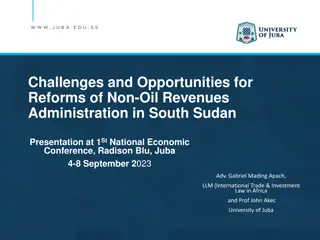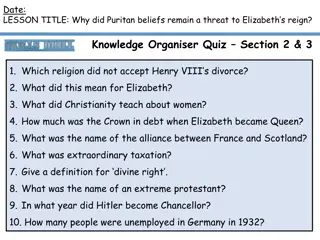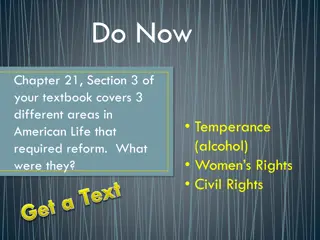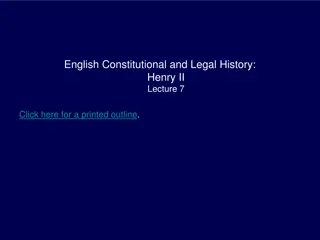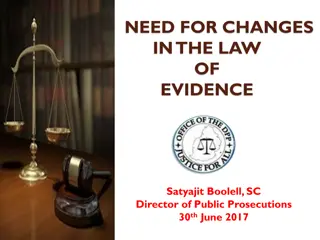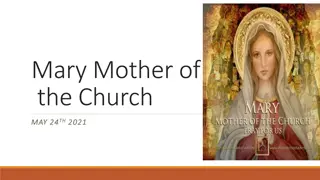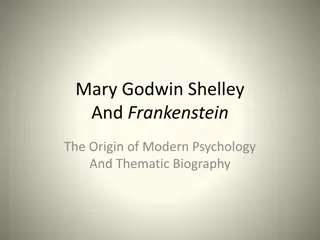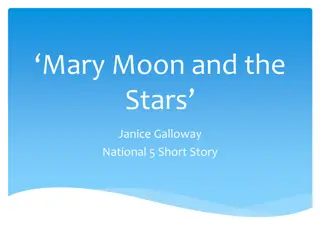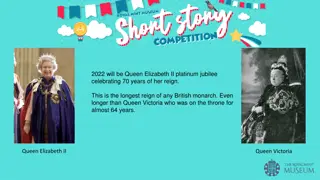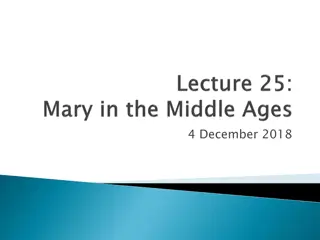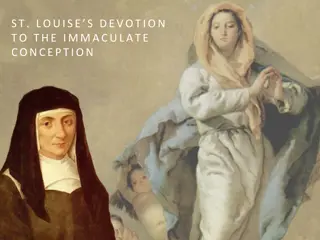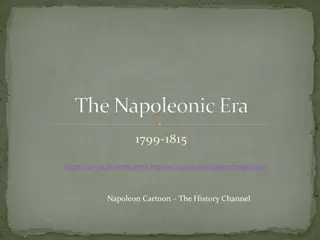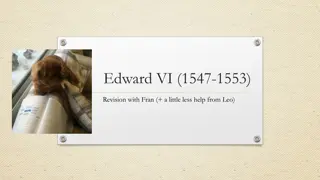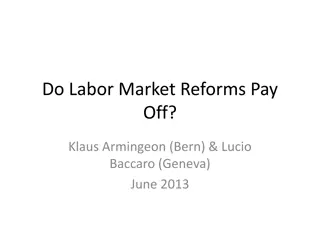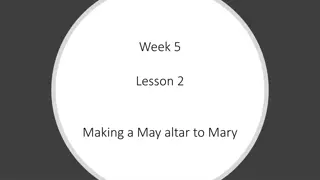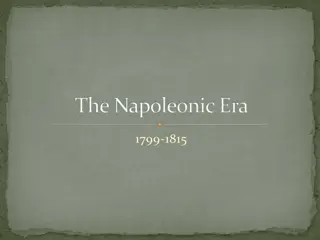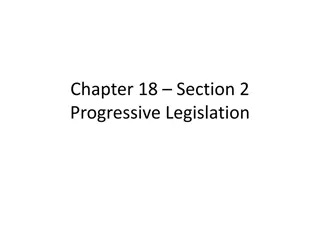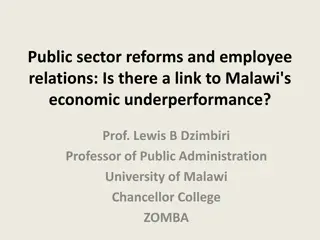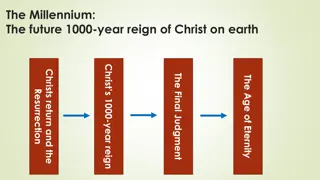Challenges and Reforms in Mary I's Reign
Mary I faced government problems due to religious divisions, lack of political instinct, and inexperienced supporters. Despite facing challenges, she implemented financial and naval reforms, improved local governance, and contributed to the Navy's modernization, laying foundations crucial for the defeat of the Spanish Armada.
Download Presentation

Please find below an Image/Link to download the presentation.
The content on the website is provided AS IS for your information and personal use only. It may not be sold, licensed, or shared on other websites without obtaining consent from the author.If you encounter any issues during the download, it is possible that the publisher has removed the file from their server.
You are allowed to download the files provided on this website for personal or commercial use, subject to the condition that they are used lawfully. All files are the property of their respective owners.
The content on the website is provided AS IS for your information and personal use only. It may not be sold, licensed, or shared on other websites without obtaining consent from the author.
E N D
Presentation Transcript
Mary I (1553-1558) Revision
Power of the Monarchy Key Individuals What to consider as we go: 1. Change/continuity 2. Success/failure 3. Significance/importance 4. Causation/consequence Foreign Relations and Succession Government Was there a Mid-Tudor Crisis in Mary s reign?! Society and Economy Religion
Marys accession Whilst Lady Jane Grey was proclaimed Queen after Edward s death, support for Mary was quick to appear e.g. 12thJuly 1553, Richard Troughton (Lincolnshire) was proclaiming that Northumberland had made himself strong, for he had gotten the Tower fie of money in comparison to men s hearts In East Anglia, it was ordinary people who first joined her cause. Mary was proclaimed Queen in Buckinghamshire, Oxfordshire, Northamptonshire and the North A naval squadron sent by Northumberland to Norfolk to stop Mary escaping mutinied 19th July Mary was proclaimed Queen in London There is amply of evidence of massive popular rejoicing (e.g. a small Shropshire town of Bridgnorth)
Government Problems Mary faced upon taking the throne England was divided on religious grounds (she was unlikely to calm this) She was not brought up to rule (had little political instinct) Her most loyal supporters had no serious experience in government (e.g. Robert Rochester, Sir Henry Bedingfield) She had to rely on those who served Edward (they have different religious views to Mary) Mary appointed 50 Councillors during her brief reign 50 Councillors = ineffective 50 Councillors = not necessarily ineffective Mary s marriage to Phillip of Spain was not discussed formally by the Council Mary regarded Councillor as an honorary title and there was a smaller working council full of experienced figures such as Gardiner, Winchester and Paget Mary never trusted her councillors e.g. lost confidence in Paget (he opposed the restoration of the English Church to Rome) Mary was thrown into the advise of two foreign advisors: Phillip II (husband) and Simon Renard (Charles V ambassador)
Government - Reforms Financial Reforms Naval Reforms Under Northumberland an investigation into finance had been set up (Mildmay) 1554 Mary implements some of the findings The Court of Exchequer took over Court of First Fruits and Tenths and the Court of Augmentations Mary made one error, remitting Edward s last subsidy = popularity at a financial cost Debt rose, but not dramatically given the war with France 1556-8 coinage plan was implemented under Elizabeth Mary s preparation helped Elizabeth 1558 Book of Rates, raised customs revenue and Liz benefitted Town Reforms Mary s reign sought to guarantee strong local government in towns Issued charters of incorporation (confirmed or extended rights) Town Councils were given a more uniform, standard structure Some say Mary was responding to pressure from the towns Could say it came from the impact of the Reformation too Reorganising of the administration and finance of the Navy 6 new ships were built + many repaired Crown budgeted for a peacetime allocation of 14,000 Elizabeth reduce this amount These reforms were effective (Treasurer to the Navy was answerable to the Lord Treasurer Winchester) In the long term these reforms were crucial to the defeat of the Armada Two acts of Parliament reformed the way of raising an army, which was vital given that England did not have a standing army Poor Relief Mary s government became more active Response to 1556-8 (influenza epidemic, harvest failures, tax) Emphasis was placed on enforcement laws against grain hoarders Strong encouragement to convert pasture land to tillage.
Marriage Options Mary was anxious to get married: she regarded it essential that she produce a male heir for a Catholic succession Her relative advanced age (37) meant that marriage needed to take place sooner rather than later Edward Courtenay Phillip II Title Earl of Devon King of Spain Backed by Gardiner (obscure why) Mary s personal preference Simon Renard was her main advisor Phillip is Catholic He has political experience His dad (Charles V) had Mary s trust and was keen Advantages Threat of factional rivalry Lacked courtly skill Mary never took him seriously as a suitor Spanish marriage may offend public opinion Phillip isn t too interested (duty) Parliament tried to dissuade Mary from her intentions Disadvantages Mary and Phillip married. Phillip was to be given the title of King, but was to exercise none of the powers that went with the title. He would have no claim to the throne.
Society (Wyatts Rebellion 1554) Support came from Maidstone, a protestant stronghold Xenophobia (fear/dislike of foreigners) Decline of the local cloth industry (express social/economic greivances) Gentry who had lost office were attracted to the rebellion CAUSES Wyatt marched to London (dissuade Mary from marrying Phillip or coup, putting Elizabeth on the throne) Mary sent the Duke of Norfolk to confront rebels (failed) Mary then fortified London and await the rebels Wyatt delayed his march (this helped Mary become better prepared) Wyatt s route across the river into London was blocked, and so went to Kingston The rebels could not break the city s defences and were forced to surrender Wyatt and chief supporters executed, his followers however were released EVENTS Protestant opinion could not be ignored Demonstrated the extent of opposition to the Spanish marriage proposal Lady Jane Grey was executed (innocent victim of her father s support) Elizabeth was arrested and sent to the Tower. Mary was convinced that Elizabeth was aware of the rebels intentions, but Wyatt did not implicate her. Gardiner and Paget had a vested interest in not finding out the truth because Elizabeth was likely to be Queen one day Wyatt had come close to success (raise and kept a large following; defeated the Duke of Norfolk; close to London) SIGNIFICANCE
Marriage of Mary and Phillip The marriage of Mary and Phillip did not take place until late July Phillip put of travelling to England for several months (arrives in Southampton of 20th July) By then, Paget, had fallen from favour and Renard was not as close to Mary Mary and Phillip first met on the 23rd July and the marriage was two days later Mary and Phillip married. Phillip was to be given the title of King, but was to exercise none of the powers that went with the title. He would have no claim to the throne. The weather was foul, the English Court was unwelcoming, Mary was 11 years older than he was (middle aged) Phillip therefore spent as little time as possible in England At a basic political level, the marriage failed Mary failed to get pregnant England was drawn into dynastic dispute (Habsburgs against the French Valois) A pro-French/anti-Spanish Pope Paul IV in 1555
Foreign Policy Mary s aims in foreign policy upon taking the English throne 1. Restore England to papal supremacy 2. To marry Phillip of Spain Both were achieved, but did take longer than expected What she did not expect however, was how the two aims would come into conflict very soon! It would be difficult for Mary to remain neutral in the Franco-Spanish war, but a anti-Spain Pope made matters worse Mary was dragged into the war on Phillips side, effectively going to war with the Papacy England declared war on France in 1557 following a landing of French troops in Scarborough. This was bizarre as the landing was led by Thomas Stafford (Duke of Buckingham s grandson) Paget trying to instigate war? The nobility were enthusiastic about war The campaign had a promising start (siege of St. Quentin) and dealt with a minor incursion of Scots into England However, it soon turned into a disaster! January 1558 Mary lost Calais, no attempt was made to recapture Attack on the port of Brest in summer 1558 also failed
Religion a return to Catholicism Haigh: Mary s popularity at the beginning of her reign reflected the considerable devotion to Catholicism in England Many anticipated the restoration of the old religion (Catholicism). In Melton Mowbray the altar was immediately rebuilt and masses were said. From August there were masses in Yorkshire. Church warden accounts show Latin service books being restored quickly Yorkshire priest Robert Parkyn all of this came to pass without compulsion of any acts, statues, proclamations or law Whist illegal, churchwardens account show parishes were happy to re-equip their churches for Catholic services But it is important to remember that there was some opposition Trouble existed in places widely separated (e.g. Lincolnshire, Kent, Dorset, London, Essex, Norfolk) the real hallmark of the Marian Church was local enthusiasm, and enthusiasm which produced large sums of money, raised at great speed, to devote to popular projects
Religious Reform 1 There was no doubt that Mary would restore Catholicism, but she faced problems: 1. Protestantism (although a minority) had attracted followers in London and the South 2. The Church of England was protected by a statue law 3. The political elite had benefitted financially from the acquisition of monastic lands, Mary needed their support Mary began cautiously 7 bishops were deprived of their living and in some cases, imprisoned Foreign Protestants were ordered to leave England First Act of Repeal (October 1553): Repealed ecclesiastical laws that had been passed under Edward VI s reign. Restored the order of service to how it had been when Henry VIII died. Did not alter the legal status of the Church of England. This would mean Mary has to acknowledge the superiority of statue law over divine law. All clergy who had married could be deprived of their living. Over of parish priests in London and Norwich were deprived. Led to more manpower problems in the church.
Religious Reform 2 The status of the church as not resolved until Mary s third Parliament (Nov 1554-Jan 1555) The process was delayed over the issue of monastic land that had fallen into private hands Pope Julius and Reginald Pole said there land should be restored to the church Renard told Charles V that ex-monastic land was in the hand of more Catholics than Protestants Pope/Pole want the English church to submit before dispensations might be awarded The Council along with Phillip/Charles knew this was politically impossible In the end Julius reluctantly accepted Charles s advice Mary s third Parliament reversed Henrican Acts of Attainders that had been passed against Pole However, there was still debates over former monastic lands, with Pole and Councillors arguing furiously Mary threatened to abdicate (bluffing) January 1555 the Second Act of Repeal was passed, which repealed anti-papal legislation from HVIII s reign Pole had become a object of suspicion amongst landowners and never recovered his reputation Pope Julius died and was replaced by anti-Spanish Pope Paul IV. He dismissed Pole and replaced him with Peto who Mary did not like = difficult legal relationship with the Pope
Religion Burning of Heretics Mary s reputation (Bloody Mary) derives from the Burning of Heretics. Foxes Book of Martyrs (published in 1563) recorded Mary s victims at length Council started to worry. Banned young from seeing burnings Strategy was misfired (first killed were popular = sympathy) 289 (237 men and 52 women) were burnt at the stake Famous victims: Cranmer, Hooper and Ridley Burnings failed to extinguish heresy. (time?) 21 clergymen, 8 gentry, but most humble in status
Religion: Other Reforms Mary s religious reform was not purely repressive. Pole tried to secure pastoral provisions New Bishops took their pastoral role seriously Pole s legatine synod (1555-1556) had clear expectations: Bishops were to reside in their diocese, preach, oversee religious life There was a proposal for all cathedrals to have a seminary attached, but this never materialised Success largely depended on commitment at a parish level This could be guaranteed in Catholic Lancashire or Durham Matters were less straightforward in the South (Kent for example) There was a wide variation of practice in the City of London


